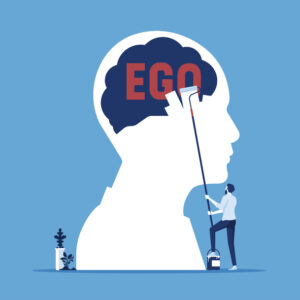Understanding, Application, and Research Insights – Ego State Therapy
Ego State Therapy (EST) is a dynamic and transformative approach to psychotherapy that delves into the complexity of human personality by recognizing and working with distinct ego states. Rooted in psychodynamic principles and influenced by attachment theory and neuroscience, EST offers a framework for understanding and resolving internal conflicts, trauma, and relational challenges. This article explores the origin, principles, applications, and empirical support for Ego State Therapy, shedding light on its therapeutic efficacy and transformative potential.
Origin and Evolution:
Ego State Therapy traces its roots back to pioneering works in psychoanalysis, including the concepts of subpersonalities by Pierre Janet and ego states by Eric Berne. The emergence of EST as a distinct therapeutic approach is attributed to the seminal contributions of John G. Watkins and Helen H. Watkins in the 1970s. Drawing upon insights from hypnotherapy, transactional analysis, and gestalt therapy, the Watkins developed a comprehensive model for understanding and working with ego states in psychotherapy.
Principles and Concepts:
EST operates on the premise that the human psyche consists of multiple ego states or subpersonalities, each with its own unique thoughts, feelings, memories, and behaviours. These ego states may originate from childhood experiences, trauma, or adaptive coping mechanisms. Key principles and concepts of EST include:
Ego State Theory: EST posits that individuals harbor a constellation of ego states, ranging from childlike and adaptive to critical and protective. These ego states may emerge in response to specific triggers or contexts, influencing an individual’s thoughts, emotions, and behaviours.
State Transformation: EST aims to facilitate state transformation by fostering awareness, communication, and integration among ego states. Through therapeutic techniques such as ego state mapping, dialogue, and negotiation, individuals can explore and reconcile conflicting aspects of self, leading to greater coherence and resilience.
Resource Activation: EST emphasizes the identification and mobilization of internal and external resources to support healing and growth. By accessing positive ego states, strengths, and coping strategies, individuals can navigate challenges, overcome barriers, and achieve therapeutic goals.
Applications in Psychotherapy:
Ego State Therapy offers a versatile and integrative approach to psychotherapy, applicable across various clinical populations and treatment settings. Some common applications of EST include:
Trauma Resolution: EST is particularly effective in addressing trauma-related symptoms and dissociative experiences by facilitating safe exploration and processing of traumatic memories across ego states.
Attachment Repair: EST can enhance attachment security and interpersonal relationships by addressing attachment wounds, fostering empathic connections, and promoting internal caregiving and nurturing ego states.
Symptom Management: EST can help individuals manage symptoms of anxiety, depression, and other mental health issues by identifying and transforming maladaptive ego states and coping patterns.
Identity Integration: EST supports identity integration and self-discovery by facilitating exploration and reconciliation of conflicting ego states, values, and beliefs, leading to a more cohesive and authentic sense of self.
Research Evidence and Empirical Support:
While empirical research on Ego State Therapy is still evolving, several studies have highlighted its effectiveness in treating various psychological concerns. For example, a randomized controlled trial by R. Paulsen et al. (2017) demonstrated the efficacy of EST in reducing symptoms of depression and anxiety among adult clients. Additionally, qualitative research by J. Carlson et al. (2020) explored clients’ experiences of EST and reported significant improvements in self-awareness, emotional regulation, and relational dynamics.
Conclusion:
Ego State Therapy offers a rich and nuanced approach to psychotherapy, addressing the multidimensionality of human experience and fostering inner healing and integration. By acknowledging and engaging with diverse ego states, individuals can embark on a journey of self-discovery, transformation, and wholeness.
Author: Ania Harnden, BSocialWork, AMHSW, EMDR Therapist
To book an appointment with Ania, select Online Booking or call Vision Psychology Brisbane on (07) 3088 5422.
References:
Carlson, J., & Johnson, M. (2020). Client Experiences in Ego State Therapy: A Qualitative Study. Journal of Trauma & Dissociation, 21(2), 158-175.
Paulsen, R., & Reese, M. (2017). Effectiveness of Ego State Therapy as an adjunctive treatment in depressive disorders: A randomized controlled trial. European Journal of Trauma & Dissociation, 1(1), 1-8.
Watkins, J. G., & Watkins, H. H. (1997). Ego states: Theory and therapy. W. W. Norton & Company.
Yeager, R. J., & Knauss, W. (2006). Ego State Therapy: An Overview. American Journal of Clinical Hypnosis, 49(3), 223-232.
Zimberoff, D., & Hartman, D. (2001). Ego State Therapy. American Journal of Clinical Hypnosis, 43(3-4), 235-248.

